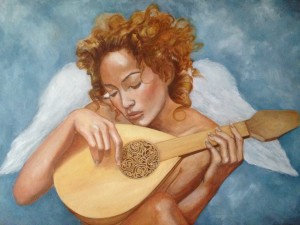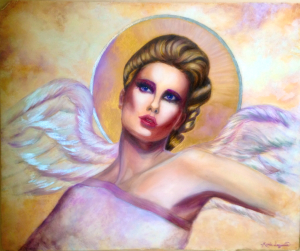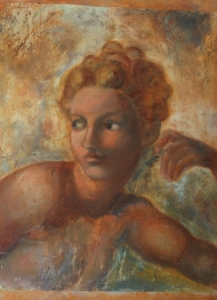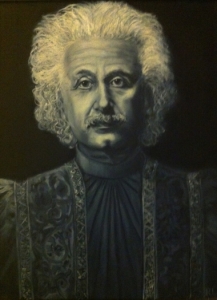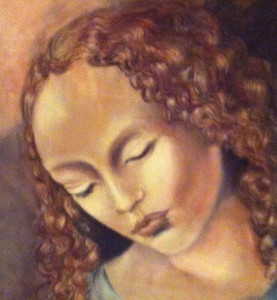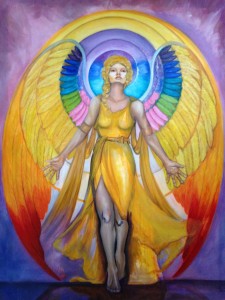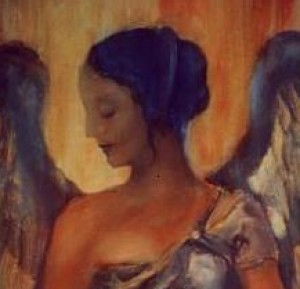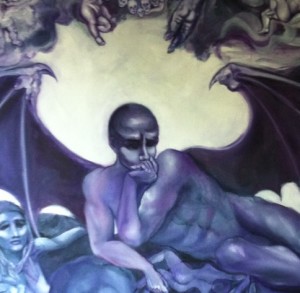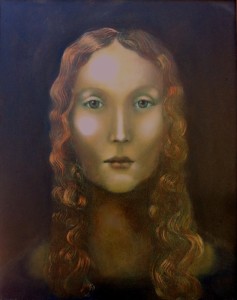Angelic Sohbet
Oil on canvas, 36” x 48”, 2013 $10,000
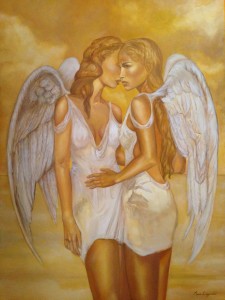
Sohbet is an Arabic word derived from Sufism, a mystical Islamic sect, and means mystical conversation. Sohbet, as it is known, plays and important and powerful role in the practice of Sufism. Sufi mystics have been known to closet themselves in sacred conversations, sharing mystical secrets and truths with one another, theologizing and philosophizing, for hours or even days.
These graceful angels whisper secret wisdoms to one another in an otherworldly, celestial atmosphere on another plane, as gold and cream clouds flicker by and time stands still. Angels are universal symbols of messengers of the divine, and found throughout many faiths, including Islam.
I have long been intrigued with Sufism, and I find the poetry of Sufi poets such as Jalaluddin Rumi and Rabia Basri very insightful and beautiful. Angels to me are wise protectors and guides that come to us in times of need. They have an understanding beyond human perception, comprehending the cosmic scheme. I find painting these mysterious and sweet beings very healing and peaceful.
